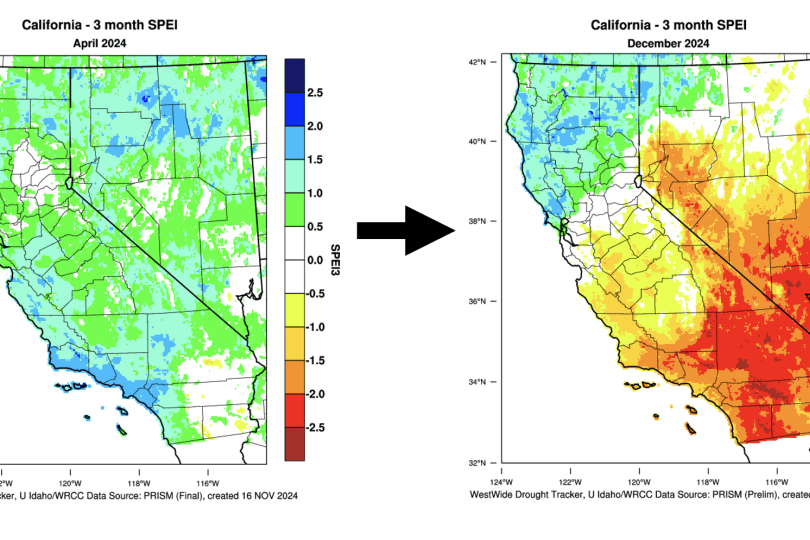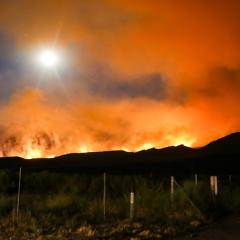Daniel Swain: Hydroclimate volatility on a warming Earth and connections to CA wildfires
Editor’s note: This story is excerpted from an original blog post by Daniel Swain on weatherwest.com. Read the original article here.
Hydroclimate volatility broadly refers to unusually rapid and/or high magnitude swings between unusually wet and dry conditions (or vice versa) relative to what is typical for a given location and season. Such rapid transitions can often generate hazards that are distinct from their constituent wet and dry extremes (e.g., floods and droughts), meaning that hydroclimate volatility can yield overall societal and ecological risks that are “greater than the sum of their parts.”
The exact terminology used to describe such volatility in the existing scientific literature is wide ranging; across the more than 200 studies Swain et al reviewed for this paper, they encountered sometimes colorful language including: hydroclimatic intensity (or variability), hydrological intensity, event-to-event variations, transitions between wet and dry periods, drought–pluvial seesaws, drought and pluvial transitions, consecutive dry and wet extremes, compound whiplash events, accelerated swings between dry and wet spells, precipitation whiplash, precipitation variability, and weather or climate whiplash. The common thread spanning each of these are sudden and/or high-magnitude shifts between wet and dry hydrologic states–and that set the stage for us to dig deeper regarding how such events may be changing as a result of the Earth’s warming climate.
In addition to performing an extensive literature review, the authors also conducted a (brief) analysis of observed and projected trends in what they term “hydroclimate whiplash”–a quantity that they define to encompass unusually rapid transitions between extremely wet and extremely dry conditions as defined by the Standardized Precipitation-Evaporation Index (SPEI; see paper for details). In his blog post, Swain discusses both their overall assessment of the state of the science surrounding hydroclimate whiplash, as well as their own specific findings using this metric.
Read the full story to learn more about the following:
- Global hydroclimate whiplash has already increased due to global warming
- What is the primary culprit? Blame the “Expanding Atmospheric Sponge.”
- Further large increases in global hydroclimate whiplash expected
- In a warming world, a growing need to co-manage drought, flood, and “whiplash transition” risks
- Southern California’s January 2025 wildfire disaster has links to ongoing wet-to-dry whiplash episode
A “read-only” version of the full paper is available to all, regardless of subscription access, via this ReadCube link.



